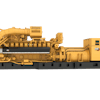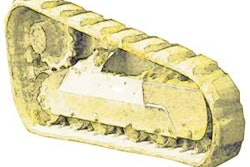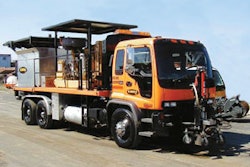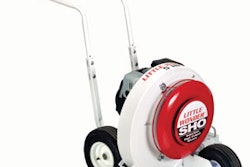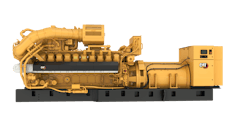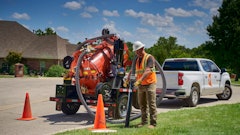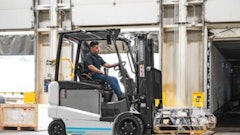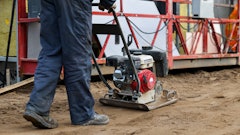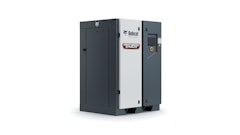It's the beginning of a new year and what better time to review your rental profitability program for 2005 and beyond? Market conditions are changing. Commodity prices are rising. New tax benefits are available. Rental is becoming more acceptable. All in all, a lot of reasons not to stand pat with last year's rental rates.
But before we continue, let's get one thing straight. When we talk profits we are also talking cash flow. This is a very important point because we can always increase rental revenues by buying more equipment, but that does not mean we can afford it or pay for it on an annual basis. Remember, in the rental business, cash is king. Don't ever forget it.
So, what about rental rates for 2005? Is your rate schedule updated? What did you do? What variables are you considering? Have expenses gone up… or down? What are you expecting in terms of a utilization mix; a lot of long-term rentals or mostly shorter-term opportunities? Are you planning any fleet additions in 2005? Are they new or used? What about delivery equipment? Need more? Have enough drivers?
As you can tell we are only touching the tip of the rental business iceberg and it's getting awfully complicated already. The point I am trying to make is that you cannot just decide to use last year's rental rates, or the so-called street rates, without taking into consideration your changes in cost-of-sales or other direct expenses related to your rental activities. Based on everything you see and hear, rental rates should increase in 2005, and comments from the public rental companies support this statement. Public rental companies expect not only an increase in business (time utilization) but also a second kicker from rate increases as well (dollar utilization).
The increases are necessary because of the steel markets, the gasoline markets, the insurance markets, the personnel market for trained service personnel, and in general, the overall 2- to 3-percent annual general inflation that occurred the last couple of years. If we are talking about cost-of-sale and direct cost items, prices or revenues have to increase to maintain gross margins. If we are talking about SG&A expenses, we need more gross profit to offset the expenses. In short, your costs increase every year and your gross profit dollars have to do the same or better if you are to have a successful profitable business with adequate cash flow.
Are there ways to increase gross profits without raising rental rates? Sure there are. You can change your sales mix from monthly rentals to more weekly and daily rentals. The dollar utilization on the shorter-term contracts is higher than what you get on monthly rentals, and if you can get "normal" time utilization with short-term rentals, gross profits increase.
You can also purchase late model used equipment instead of new units. Your dollar utilization is higher along with your cash flow. If you adjust, however, your rates to compensate for the lower cost you have in the unit, you wind up right where you started and gain zero advantage.
You can also change your fleet mix and go after unique rental opportunities where the dollar utilization is higher and, in many cases, your investment is smaller. If you can find these types of opportunities they are worth investigating.
Need cash flow? Need higher dollar utilization? Maybe the fleet needs to be reduced. If you are not meeting industry dollar utilization standards based on the cost of your fleet, make adjustments now before they get out of hand. When you compute the cash flow implications of keeping under-utilized rental units, believe me, you will sell it tomorrow.
Once you get past fleet considerations, it's time to move on to the rest of your revenues and expenses. Are you selling everything you can sell? Are you charging for everything you can? This is a very important area to review. Remember, a 1-percent change in rental revenues without any change in costs falls right through to the bottom line. So review what the competition is doing and make sure you follow suit.
There are really three or four major income statement categories that need to be reviewed monthly to ensure the realization of profit goals. First is gross profit, because gross profit is all you get to spend to cover all those SG&A expenses. Your top line sales might go up dramatically, but if gross profits (in terms of absolute dollars) don't follow suit, you cannot cover increases in SG&A expense. That's why it is always important to compare SG&A expenses against gross dollars earned. If it's not in the gross profit line, you cannot spend it.
Other major expenses are personnel costs, occupancy costs and the remaining SG&A expenses. Hit the industry standard for these categories as a percentage of gross profit and you hit your profit goals. Miss these targets and a loss is almost assured. There is very little leeway when contemplating these expense categories. They have to fit the model without exception.
Now that we covered what it takes to properly revise rental rates, making sure you are charging all you can charge and providing a general program to monitor expenses, the question becomes, how do we do this?
The answer is benchmarking. You need data to help you set up a budget to help review your historical results as well as your 2005 budgets. In the rental business, budgets are a must. In the rental business, cash flow budgets are a must. You just cannot comfortably operate a rental business without these two documents.
The public rental companies provide insight into statement format and operating results. Pull them off the Internet and review them. Rental associations also provide data, but you have to make absolutely sure you understand what each number represents and how it is calculated. If you can do that, they are a great help in laying out a format for you to slide your numbers in. Sharing information with other rental companies who have similar "selling seasons" is probably the best way to start. The information is there, all you have to do is find it and make the time to do the homework.
The one expense category most people have trouble with is personnel cost. How many people to employ and how to count them. Determining what is important - sales per employee or gross profit per employee. Deciding if owners are included in the figures or not. This section of any study will drive you nuts. In addition, this is the one area where you will fight to rationalize why you have more people than the standards allow. And it is the one big expense category to determine whether you make money or not. But, if the industry standards say you should operate your size business with 15 people and you have 20, you are going to lose money because every full-time employee costs you a minimum of $40,000 per year. If you are breaking even or losing money, my recommendation is to look at employee expenses first and, if necessary, do what you have to do and make everybody else work a little harder.
It's time to get your Excel spreadsheets out to start reviewing budgets and cash flows and to list potential adjustments to increase rental revenues and profits.


